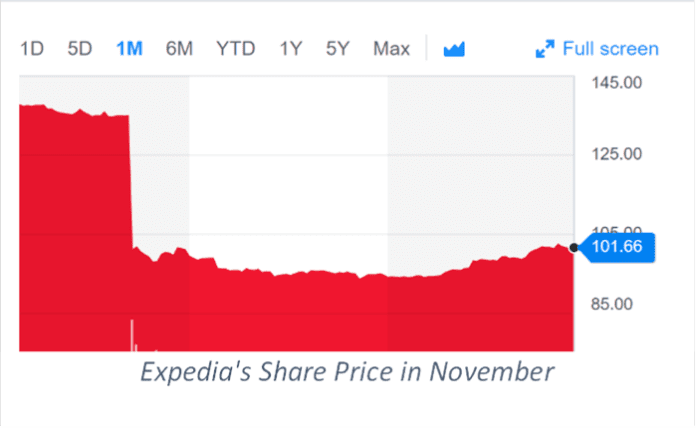
Happy Thanksgiving from Lake Norman, North Carolina, where I finally got the turkey to look normal after grilling (thanks to YouTube videos). Hope your Thanksgiving was filled with good food, fellowship, and safe travels.
This week’s Brief is a review and summary of one of the many books I have been reading (thanks to your suggestions) on the history of technology – Tim Wu’s The Master Switch: The Rise and Fall of Information Empires. It was written in 2010 and, in paper edition, is a 376-page chronicle of that Wu calls “The Cycle.” The book can be purchased for less than $3 used on Alibris (shipping extra) and is definitely a must read for anyone who wants an historical perspective on technology in the 20th century.
This week’s TSB draws not only from the book but from two lectures Tim Wu gave around the time of the publication. The first is to the Stanford Center on Internet in Society in May 2011 and the second to the Berkman Klein Center for Internet & Soc iety at Harvard University in January 2011.
iety at Harvard University in January 2011.
Before going into the details of the book, here’s a brief biography of the author, provided by Wikipedia.
“Wu was born in Washington, D.C. and grew up in Basel, Switzerland, and Toronto, Ontario, Canada. His father, Alan Ming-ta Wu, was from Taiwan and his mother, Gillian Wu, is British-Canadian. They both studied as immunologists at the University of Toronto. Wu and his younger brother were sent to alternative schools that emphasized creativity, where he befriended Cory Doctorow. Wu’s father died in 1980 and his mother bought him and his brother an Apple II computer using some of the insurance money, starting Wu’s fascination with computers.
“Wu attended McGill University, where he initially studied biochemistry, later switching his major to biophysics. He graduated from McGill with a Bachelor of Science degree in 1995 and received his J.D. degree from Harvard Law School in 1998. At Harvard, he studied under copyright scholar Lawrence Lessig.
“Wu worked with the U.S. Department of Justice, Office of Legal Counsel, after graduating from law school, and before starting a clerkship with Richard Posner on the Seventh Circuit Court of Appeals in 1998-1999. He also clerked for Stephen Breyer, U.S. Supreme Court in 1999-2000. Following his clerkships, Wu moved to the San Francisco Bay Area, worked at Riverstone Networks, Inc. (2000–02) and then entered academia at the University of Virginia School of Law.
“Wu was Associate Professor of Law at the University of Virginia from 2002 to 2004, Visiting Professor at Columbia Law School in 2004, Visiting Professor at Chicago Law School and at Stanford Law School, both in 2005. In 2006, he became a full professor at Columbia Law School and started Project Posner, a free database of all of Richard Posner’s legal opinions. Wu called Posner “probably America’s greatest living jurist. ”
Professor Wu is a research scholar; this is clearly evident in his work. His greatest claim to fame is the popularization of the term “net neutrality” in a 2003 paper entitled Network Neutrality, Broadband Discrimination that he wrote while at the University of Virginia.
The Master Switch won critical acclaim in 2010 by a wide variety of publications, including Fortune, Publishers Weekly, and The New Yorker magazine.
The “Cycle”
At the heart of The Master Switch is what Wu Refers to as “The Cycle” (below passage is from the Introduction):
“Every few decades, a new communications technology appears, bright with promise and possibility. It inspires a generation to dream of a better society, new forms of expression, alternative types of journalism. Yet each new technology eventually reveals its flaws, kinks, and limitations. For consumers, the technical novelty can wear thin, giving way to various kinds of dissatisfaction with the quality of content (which may tend toward the chaotic and the vulgar) and the reliability or security of service. From industry’s perspective, the invention may inspire other dissatisfactions: a threat to the revenues of existing information channels that the new technology makes less essential, if not obsolete; a difficulty commoditizing (i.e., making a salable product out of) the technology’s potential; or too much variation in standards or protocols of use to allow one to market a high quality product that will answer the consumers’ dissatisfactions.
“When these problems reach a critical mass, and a lost potential for substantial gain is evident, the market’s invisible hand waves in some great mogul like [AT&T Chairman Theodore] Vail or band of them who promise a more orderly and efficient regime for the betterment of all users. Usually enlisting the federal government, this kind of mogul is special, for he defines a new type of industry, integrated and centralized. Delivering a better or more secure product, the mogul heralds a golden age in the life of the new technology. At its heart lies some perfected engine for providing a steady return on capital. In exchange for making the trains run on time (to hazard an extreme comparison), he gains a certain measure of control over the medium’s potential for enabling individual expression and technical innovation—control such as the inventors never dreamed of, and necessary to perpetuate itself, as well as the attendant profits of centralization. This, too, is the Cycle. ”
Openness and experimentation lead to consolidation and control, eventually morphing into a natural, competitive, or government-dictated monopoly. Wu goes on to posit that the growth of the Internet (re: published in 2010) is subject to the same Cycle which he sees as “in consolidation” even prior to events such as AT&T + Time Warner (content), Time Warner Cable + Charter + Brighthouse, and T-Mobile + Sprint.
The relationship of “The Cycle” to the book’s organization
The Master Switch is divided into five parts:
- Part 1 focuses on the founders that create and discover the new industry
- Part 2 details attempts of established communications companies (many times in conjunction with the FCC and FTC) to thwart value-adding feature functionality (Wu calls these “sustaining innovations”)
- Part 3 addresses government-aided attempts to create competition within industries
- Part 4 discusses how some companies and industries were able to reinvent themselves after being impacted by the changes wrought in Part 3
- Part 5 poses the question “Can the Internet buck the Cycle?” and discusses options to prevent excessive consolidation of content creation, communications infrastructure, and distribution.

The Kronos effect, defined by Wu as “the efforts undertaken by a dominant company to consume its potential successors in their infancy” plays an important role in technology development. Western Union was insatiable in its desire to destroy the upstart Bell network, although, as Wu describes in the book, was decidedly shortsighted when they rejected Bell’s offer to sell them the main telephone patent for $100,000. The American film industry is quickly co-opted by phonograph companies, and the 1930s produce Kronos twins NBC and CBS which dominate the early days of television.
The most telling example of the Kronos effect, however, occurs in 1934 within AT&T. Wu describes the following situation:
“In early 1934, Clarence Hickman, a Bell Labs engineer, had a secret machine, about six feet tall, standing in his office. It was a device without equal in the world, decades ahead of its time. If you called and there was no answer on the phone line to which Hickman’s invention was connected, the machine would beep and a recording device would come on allowing the caller to leave a message.
“The genius at the heart of Hickman’s secret proto–answering machine was not so much the concept—perceptive of social change as that was—but rather the technical principle that made it work and that would, eventually, transform the world: magnetic recording tape. Recall that before magnetic storage there was no way to store sound other than by pressing a record or making a piano roll.
“The new technology would not only usher in audiocassettes and videotapes, but when used with the silicon chip, make computer storage a reality. Indeed, from the 1980s onward, firms from Microsoft to Google, and by implication the whole world, would become utterly dependent on magnetic storage, otherwise known as the hard drive.”
Why did Bell Labs (and AT&T management) reject the idea of the answering machine and the underlying invention of magnetic tape? Wu continues:
“…In Bell’s imagination, the very knowledge that it was possible to record a conversation would “greatly restrict the use of the telephone,” with catastrophic consequences for its business. Businessmen, for instance, the theory supposed, might fear the potential use of a recorded conversation to undo a written contract. Tape recorders would also inhibit discussing obscene or ethically dubious matters. In sum, the very possibility of magnetic recording, it was feared, would “change the whole nature of telephone conversations” and “render the telephone much less satisfactory and useful in the vast majority of cases in which it is employed.”
And so it was that AT&T stifled not only the development of magnetic tape, but also the development of an answering machine until the early 1980s. While this not the only example of poor technology evaluation, it’s the best one depicting the secondary impact on highly disruptive component development. The era of computing might have been different had this 1934 innovation been pursued.
AT&T reacts to external efforts to improve the telephone (a.k.a, the Hush-A-Phone controversy)Why did Bell Labs (and AT&T management) reject the idea of the answering machine and the underlying invention of magnetic tape? Wu continues:
“…In Bell’s imagination, the very knowledge that it was possible to record a conversation would “greatly restrict the use of the telephone,” with catastrophic consequences for its business. Businessmen, for instance, the theory supposed, might fear the potential use of a recorded conversation to undo a written contract. Tape recorders would also inhibit discussing obscene or ethically dubious matters. In sum, the very possibility of magnetic recording, it was feared, would “change the whole nature of telephone conversations” and “render the telephone much less satisfactory and useful in the vast majority of cases in which it is employed.”
And so it was that AT&T stifled not only the development of magnetic tape, but also the development of an answering machine until the early 1980s. While this not the only example of poor technology evaluation, it’s the best one depicting the secondary impact on highly disruptive component development. The era of computing might have been different had this 1934 innovation been pursued.
AT&T Reacts to External Efforts to Improve the Telephone (a.k.a, the Hush-A-Phone controversy)
Professor Wu spends the majority of one chapter on the Hush-A-Phone, an invention by Henry Tuttle designed to increase the privacy of the telephone by placing an additional attachment between the receiver and the subscriber’s mouth (a good picture of the Hush-A-Phone in use is here).
After the Hush-A-Phone’s early release (and 125,000 units sold), AT&T technicians began to warn customers that their continued use of the attachment violated their tariff and could ultimately result in service disconnection. The scary truth is that their warnings were based in fact – the law at the time stated that “No equipment, apparatus, circuit or device not furnished by the telephone company shall be attached to or connected with the facilities furnished by the telephone company, whether physically, by induction, or otherwise.”
Mr. Tuttle moved to reverse that rule in 1948, and, for two weeks in early 1950, both sides presented their arguments (Wu outlines them brilliantly in Chapter 7). For no apparent reason, however, the FCC declined to rule on the hearing until 1955 – the above law held for that entire period.
On top of this, the FCC ruled against Tuttle, forcing him to launch an appeal which he would ultimately win. Appeals Court Judge Brazelton would rule that the subscriber has the “right reasonably to use his telephone in ways which are privately beneficial without being publicly detrimental.”
Tuttle dies a penniless man, having spent most of his fortune fighting his larger opponent. Even after winning the appeals court victory, Tuttle could not mount a significant challenge to AT&T’s increasing product innovations.
Ten years later, what does The Master Switch mean today?
Professor Wu concludes the book (remember – published in 2010) with a proposed separations policy. He defines separations as “an effort to prevent any single element of society from gaining dominance over the whole, and by such dominance becoming tyrannical.”
Specifically, he outlines separation of a) developers of information (content creators) from b) the network infrastructure over which it travels (service providers) and c) those who control the tools or venues of access (equipment providers, venues such as movie theaters, search engines, etc.). The Separations Principle has an additional necessity: that the government also keep its distance and not intervene in the market to favor any technology, network monopoly, or integration of the major functions of an information industry.

As we discussed in last week’s TSB, the convergence of content and networks (especially wireless) has become more important in the ten years since Wu’s Master Switch. AT&T has publicly staked its company’s fate on it and continues to evolve toward single services which deliver company-owned content to the customer with minimal packet loss and low latency (presumably to the detriment of non-HBO content during times of congestion). AT&T and Comcast firmly reject Wu’s Separations Principle, with the former becoming more vocal about their desire to favor created content as part of products and services.
But AT&T is not the only company with separations frustration. When Google changed its search results related to travel in the second and third quarters of this year (a convergence of a. and c. above), many online travel merchants felt the impact. Mark Okerstrom, Expedia’s CEO, described the impact as “incremental weakness in SEO volumes and a related shift to high-cost marketing channels.” This sent Expedia’s stock price tumbling more than 30% (see nearby chart – the Google “squeeze” cost Expedia shareholders ~$6 billion – more in this article).
While Wu’s Separations Principle is a viable recommendation, it’s no longer practical given the events of the past decade. The market is left to decide whether a Google-Verizon partnership (which incorporates content such as YouTube TV, YouTube, as well as search) is better for markets than an “all in one” solution from AT&T. Watching content disappear from Netflix may not hurt as much as many predict, and a portal will emerge.
The Master Switch provides a terrific historical perspective on the evolution of broadcasting, communication, motion picture, and technology industries. Definitely worth reading, and hopefully a revised edition is forthcoming.
That’s it for this week. Next week, unless events dictate otherwise, we will be looking at the role of increased carrier RAN software control and development. Until then, if you have friends who would like to be on the email distribution, please have them send an email to sundaybrief@gmail.com and we will include them on the list.
Lastly, if you want to see two terrific interviews from November (Bill Gates at the New York Times DealBook conference, and John Malone CNBC interview with David Faber), check out last week’s mid-week post here.
Have a great week… and GO CHIEFS!

